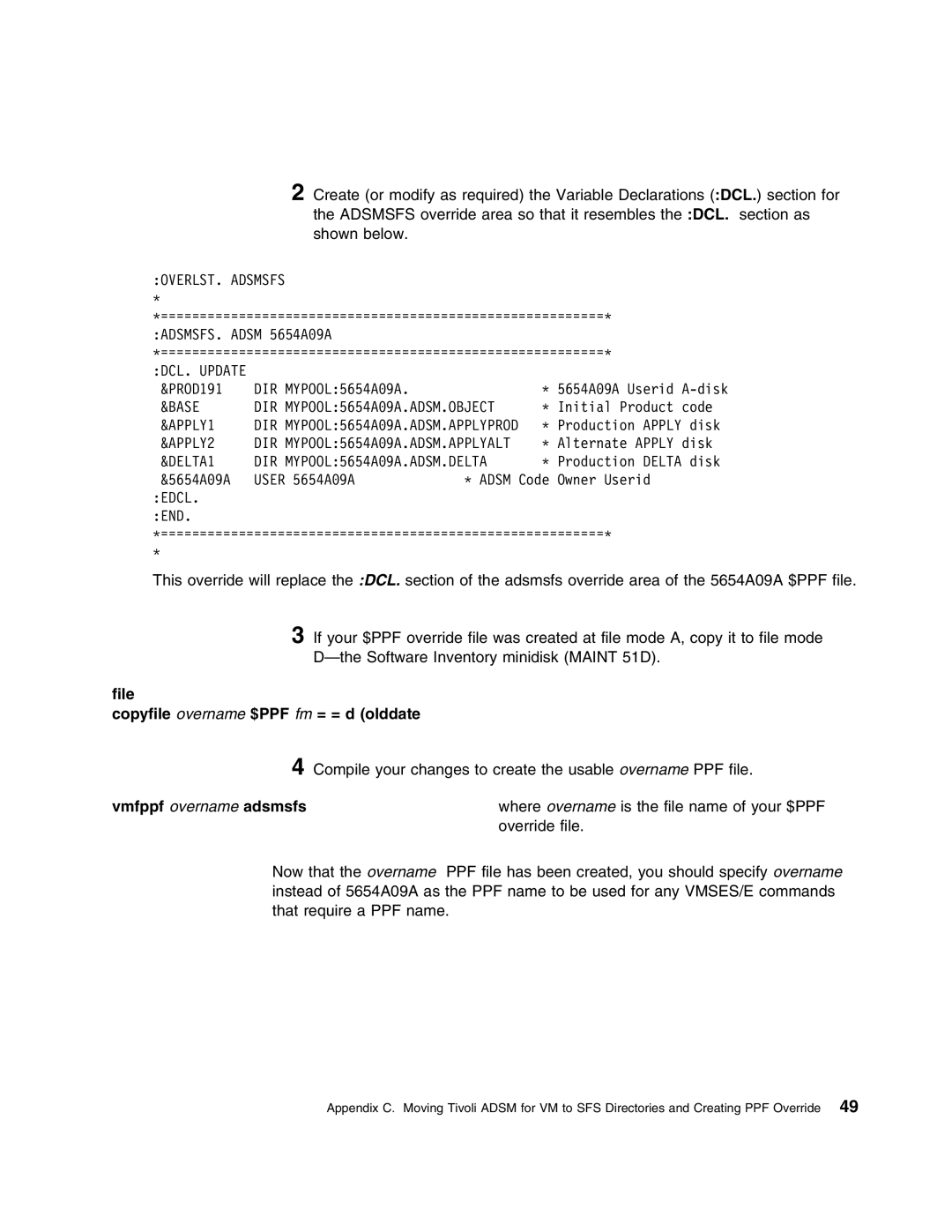5697-VM3 specifications
The IBM 5697-VM3 is a system designed for high-performance computing environments, primarily aimed at enterprise-level customers seeking robust virtualization and management capabilities. This model is part of IBM's esteemed family of virtualization solutions, designed to optimize resource allocation, improve operational efficiency, and support diverse workloads.One of the standout features of the IBM 5697-VM3 is its advanced virtualization capabilities. It utilizes IBM's proprietary virtualization technology, which allows multiple operating systems and applications to run simultaneously on a single physical machine. This consolidation can significantly reduce hardware costs and simplify management tasks, providing a cost-effective solution for organizations looking to maximize their IT investments.
The 5697-VM3 also comes equipped with powerful processing capabilities, harnessing IBM’s latest multi-core processor architecture. This enhances performance, allowing the system to handle complex computations and large-scale applications seamlessly. Coupled with extensive memory support, it ensures that even memory-intensive tasks can be performed without significant slowdowns.
In terms of connectivity, the IBM 5697-VM3 features a variety of networking options, including high-speed Ethernet interfaces and support for advanced networking protocols. This flexibility enables organizations to integrate the system into their existing infrastructure while maintaining high data transfer speeds and reliability.
The system is built with IBM’s cutting-edge security technologies, ensuring data protection is a top priority. It features advanced encryption capabilities, secure boot processes, and ongoing firmware updates aimed at safeguarding against emerging threats. With these measures, organizations can feel confident that their sensitive data and applications are well-guarded.
Another notable characteristic of the IBM 5697-VM3 is its scalability. Organizations can start with a modest configuration and gradually scale up as their needs grow, making it a future-ready solution. This adaptability is crucial in today’s fast-paced business environment, where organizations must remain agile and responsive.
Lastly, the system is backed by IBM's illustrious support services. Customers benefit from extensive resources, including access to expert advice, troubleshooting assistance, and tailored solutions that help maximize system performance.
In summary, the IBM 5697-VM3 is a powerful virtualization system that combines advanced processing, extensive memory support, strong security features, and scalability, making it ideal for enterprise-level applications and workloads. Its ability to streamline operations while maximizing performance and security makes it a vital component for modern IT infrastructures.
